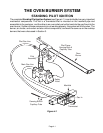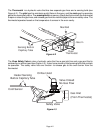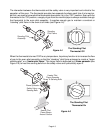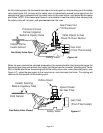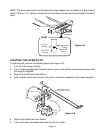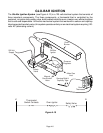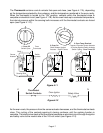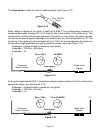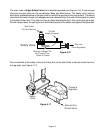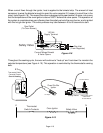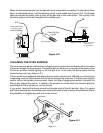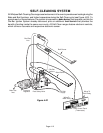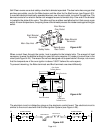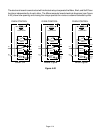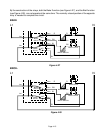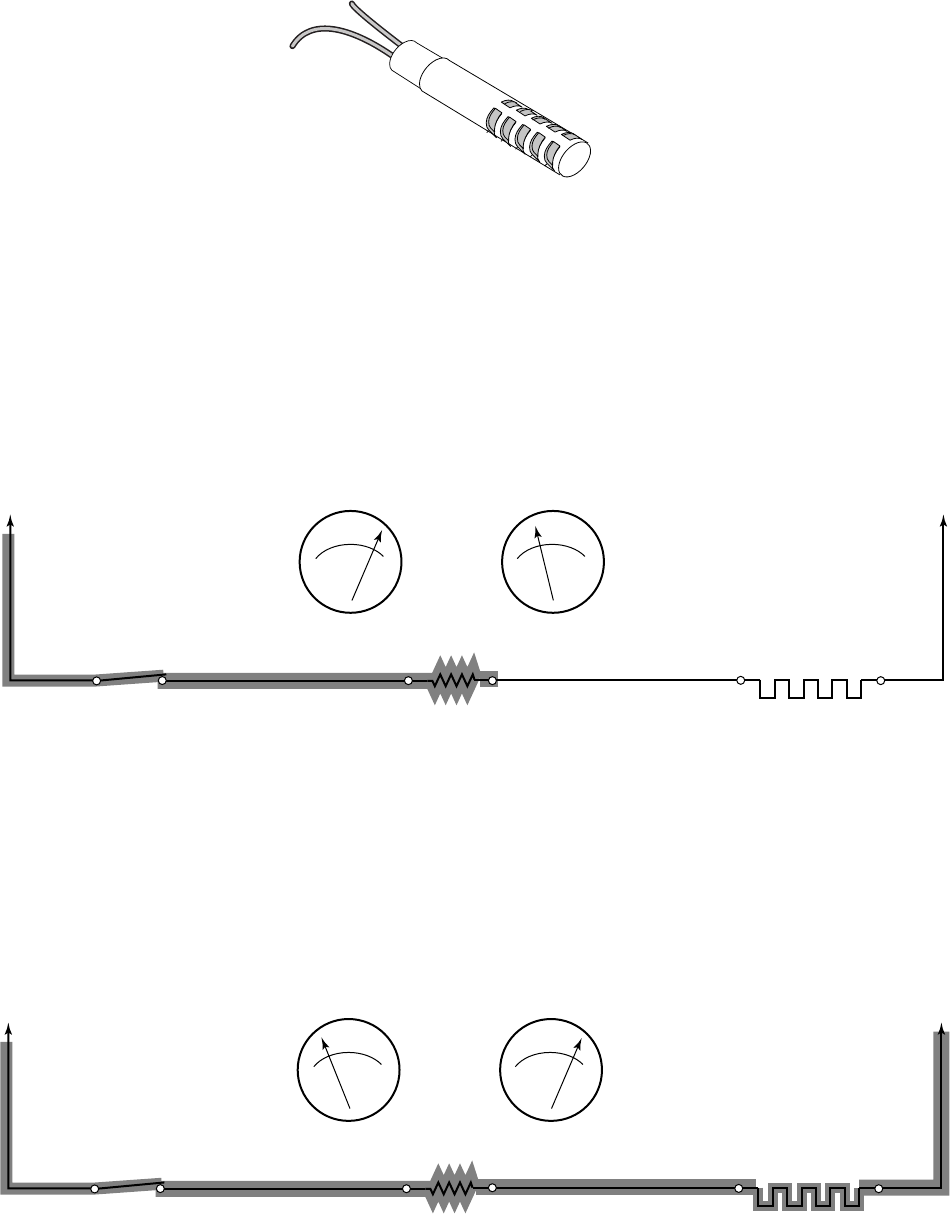
Page 4-8
The
Oven Ignitor
is made of a silicon-carbide material (see Figure 4-13).
Oven Glo-Bar
Ignitor
Figure 4-13
When voltage is applied to the ignitor, it heats up to 2000˚F. As its temperature increases, its
resistance decreases, allowing 2.5 to 3.0 amps to flow to the bimetal in the safety valve. This
measurement is critical to the proper operation of the ignitor. In many cases, the ignitor can glow
red, but not provide the proper amperage to the safety valve. At a room temperature of 75˚F, the
resistance of the ignitor should be between 50 and 1100 Ω. At room temperature the ignitor can
not provide enough amperage to properly operate the safety valve (see Figure 4-14).
Amperage = voltage divided by resistance (cold ignitor)
Amperage = 120 volts ÷ 500 ohms
Amperage = .24
Figure 4-14
As the ignitor heats toward 2000˚F, its resistance drops to approximately 40 to 45 Ω, and can then
operate the safety valve (see Figure 4-15).
Amperage = voltage divided by resistance (hot ignitor)
Amperage = 120 volts ÷ 40 ohms
Amperage = 3.0
Figure 4-15
Oven Ignitor
Thermostat
Switch Contacts
Safety Valve
Bimetal
NL1
50 to 1100 Ω
.24 AMPS
Thermostat
Switch Contacts
Safety Valve
Bimetal
NL1
50 to 1100 Ω
2.5 to 3.0 AMPS
Oven Ignitor




